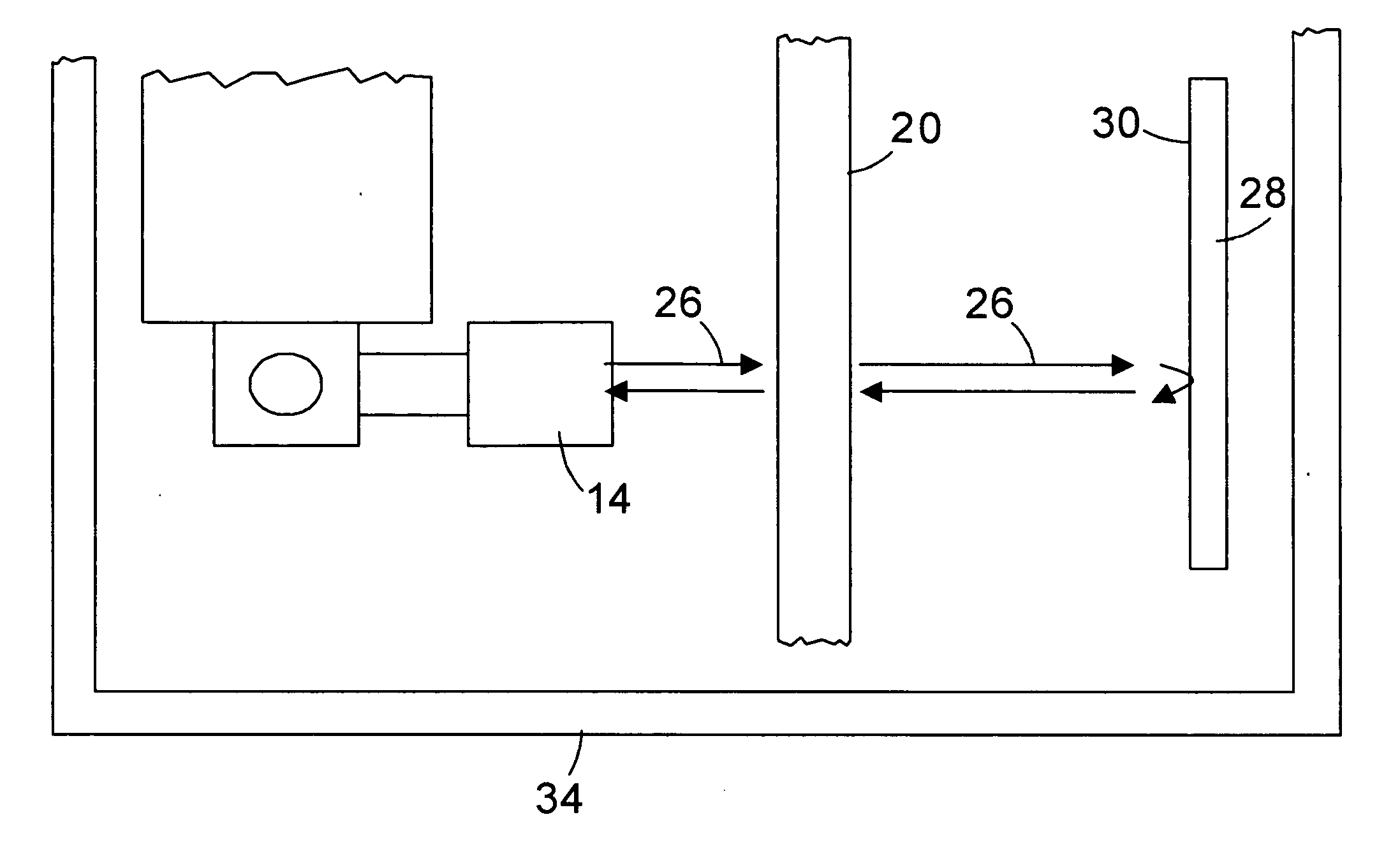Nondestructive inspection method and system therefor
- Summary
- Abstract
- Description
- Claims
- Application Information
AI Technical Summary
Benefits of technology
Problems solved by technology
Method used
Image
Examples
Embodiment Construction
[0020] The present invention provides a nondestructive examination method and system for determining the fiber volume fraction of a composite article on the basis of the mass density (ρa) of the article, the mass density (ρm) of the matrix material of the article, the mass density (ρf) of the fiber material of the article, and the volume fraction (vp) of porosity in the article. According to a preferred aspect of the invention, only two measurements of the actual composite article are required: the mass density of the composite article, and the porosity volume fraction. Other required information, such as the densities of the fiber and matrix materials of the composite article and any coating on the composite article, are characteristics of the materials that are usually available from various sources, such as the manufacturers of these materials. The volume of a coating can be calculated from the coating thickness, which can be nondestructively measured or accurately estimated base...
PUM
 Login to View More
Login to View More Abstract
Description
Claims
Application Information
 Login to View More
Login to View More - R&D
- Intellectual Property
- Life Sciences
- Materials
- Tech Scout
- Unparalleled Data Quality
- Higher Quality Content
- 60% Fewer Hallucinations
Browse by: Latest US Patents, China's latest patents, Technical Efficacy Thesaurus, Application Domain, Technology Topic, Popular Technical Reports.
© 2025 PatSnap. All rights reserved.Legal|Privacy policy|Modern Slavery Act Transparency Statement|Sitemap|About US| Contact US: help@patsnap.com



